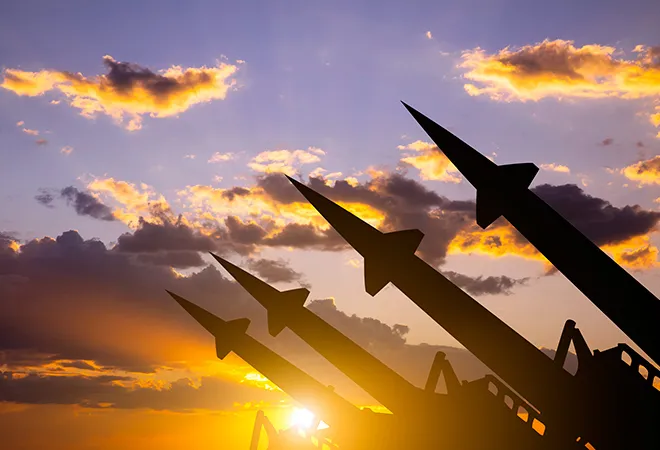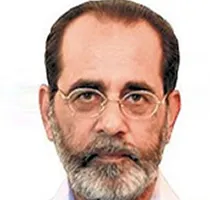New uncertainties surround the outcome of the war in Ukraine. Will Russia’s President Vladimir Putin further tighten military pressure or accept assurances about Ukrainian neutrality? Will he settle for a corridor to the Crimean Peninsula or insist that Kyiv falls?
Whichever way the conflict ends, one outcome is clear: Nuclear weapons are here to stay and any prospects for nuclear arms control and nuclear disarmament have receded further.
In 1991, when the erstwhile Soviet Union broke up into 15 independent sovereign republics, Russia became the successor state to the former Union of Soviet Socialist Republics (USSR). A key challenge was that in addition to Russia, three republics hosted Soviet nuclear weapons in their territory, Belarus, Kazakhstan and Ukraine. Ukraine had the largest nuclear infrastructure with missile factories and naval shipyards, with nearly 5,000 warheads within its territory.
Semipalatinsk, the nuclear weapon testing site, was in Kazakhstan. While the launch codes rested with the Russian leadership, there was significant nuclear expertise available among the local population.
The prospects of three new states claiming ownership of readymade nuclear arsenals and stockpiles of sizeable quantities of fissile material was a nightmare scenario for both President Bill Clinton and President Boris Yeltsin. The Nuclear Non-Proliferation Treaty (NPT), concluded in the late 1960s, had originally been given a life of 25 years and in 1995, a decision was due regarding its future.
The rub was that the NPT only recognised countries that had conducted a nuclear test before January 1, 1967, as nuclear-weapon States, a definition that covered five countries — the United States (US), the United Kingdom (UK), France, China, and Russia as the successor to the USSR – that conveniently happened to be the permanent members of the United Nations (UN) Security Council, wielding veto power. None of these five were willing to allow new countries in and neither Russia nor China liked the idea of new nuclear neighbours. A massive political and diplomatic effort was mounted, led by the US, with Russia and the Europeans adding their efforts, to get the three to voluntarily renounce nuclear ambitions, return the weapons to Russia and accede to the NPT as non-nuclear-weapon States. The International Atomic Energy Agency (IAEA) audited the nuclear sites and facilities, closing down some and bringing others under permanent inspections, thereby certifying their denuclearisation. While Belarus and Kazakhstan fell in line, in Ukraine the issue provoked an internal debate as it also produced the SS-24, a three-stage solid fuel MIRVed Intercontinental ballistic missile, with 10 warheads and a range of 10,000 km.
The combination of
saam, daam, danda, bhed (by whatever means possible) eventually worked. At a conference in Budapest in December 1994, three identical memorandums on security assurances were signed relating to the accession of Belarus, Kazakhstan and Ukraine to the NPT and the three depositary states of the NPT, the US, the UK, and Russia, provided security assurances in return. Similar assurances were also provided separately by France and China. These included respecting the independence and sovereignty, refraining from interference or any threat to use force and seeking UN Security Council action in case any of the three countries were subjected to any aggression.
In May 1995, the NPT was extended indefinitely and unconditionally. In 2014, following the annexation of Crimea by Russia, the question of Russian violation of the Budapest Memorandum came up. Russia claimed that what had taken place in Crimea was a “revolution”; a referendum in Crimea declared independence and voted to join Russia.
Russia was not obliged to force people to stay in Ukraine against their will and further accused the US of interfering in Ukraine’s internal affairs by instigating the Euromaidan protests that led to the fall of the government. US legal experts pointed out that since it was a memorandum and not a treaty, the obligations were declaratory in character.
Hardly surprising then, that addressing the Munich Security Conference last month, Ukrainian president Volodymyr Zelensky bemoaned the fact that his country had given up its nuclear weapons in return for security assurances that never materialised and wondered aloud if Ukraine should withdraw from the Budapest Memorandum.
Warning the North Atlantic Treaty Organization (NATO) to stay out of the Ukraine conflict, Putin warned of “never encountered consequences” and days later, on February 27, announced that “the deterrence forces had been put into a special mode of combat service”. His spokesman explained that this was a reaction to deter any possible confrontation between NATO and Russian troops. Putin’s nuclear sabre-rattling was condemned in Europe and the US called it “unacceptable escalation”.
Putin is hardly the first to engage in such theatrics. In 2017, US President Donald Trump threatened North Korea with “fire and fury like the world has never seen” and North Korea responded by calling Trump “a dotard”, threatening to hit Guam and “enveloping it in fire”. Later, Trump described Kim Jong-un as “the rocket man on a suicide mission for himself and his regime” while North Korea “vowed to tame the mentally deranged US dotard with fire”.
Interestingly, on February 27, former Japanese Prime Minister (PM) Shinzo Abe voiced the idea of Japan hosting US nuclear weapons, something that was taboo in view of Japan’s three “Nos”: No development, No possession, and No introduction of nuclear weapons on its territory. The reason was a possible conflict with China over Taiwan. Though PM Fumio Kishida dismissed the idea, China reacted strongly, blaming Japanese militarism and slamming such notions.
Growing nuclear rhetoric, together with new nuclear doctrines defining new roles for nuclear weapons, are being explored by the major nuclear powers. However, other technologically capable countries are observing and will draw their own conclusions. With receding prospects for arms control, nuclear risks in the 21st century are rising inexorably.
This commentary originally appeared in Hindustan Times.
The views expressed above belong to the author(s). ORF research and analyses now available on Telegram! Click here to access our curated content — blogs, longforms and interviews.




 PREV
PREV


